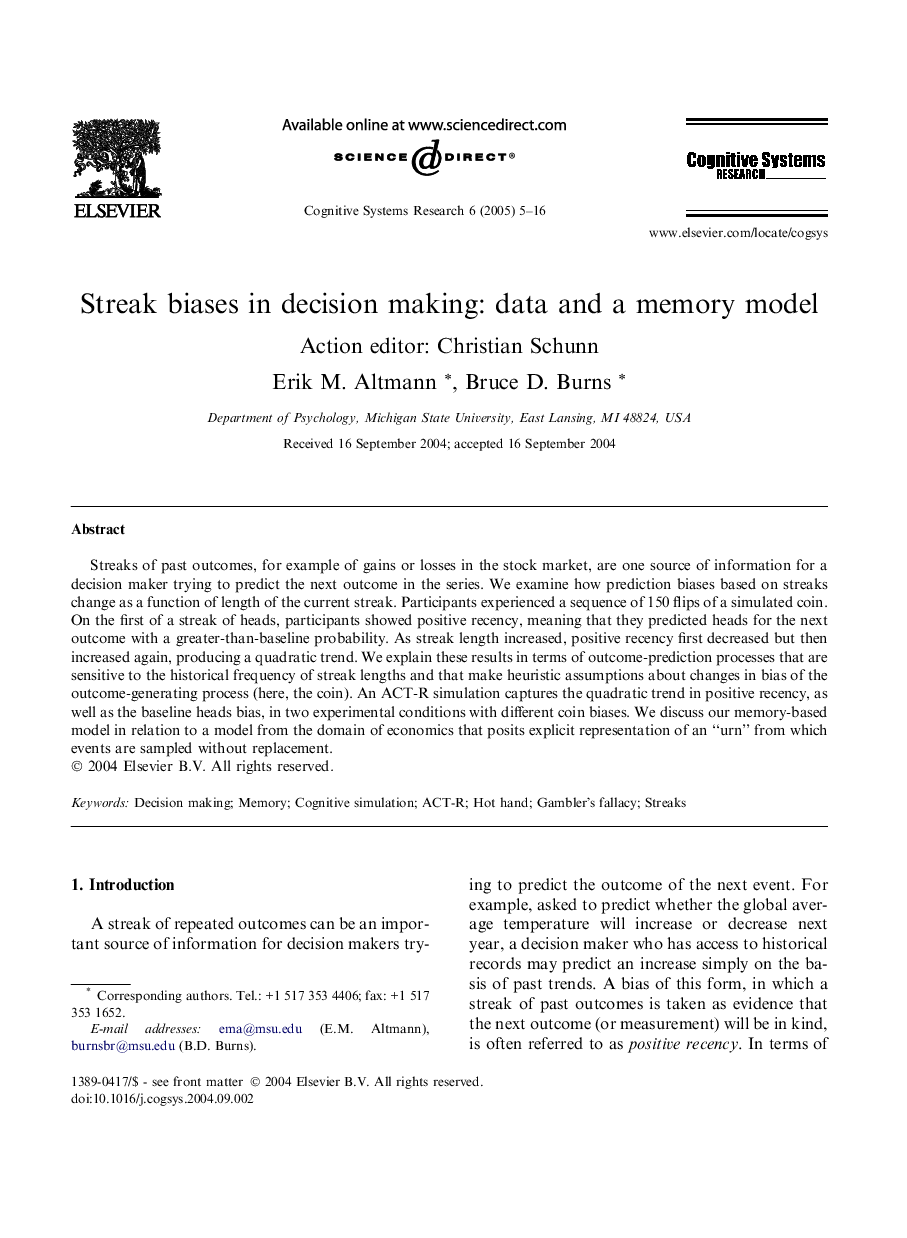| Article ID | Journal | Published Year | Pages | File Type |
|---|---|---|---|---|
| 10321011 | Cognitive Systems Research | 2005 | 12 Pages |
Abstract
Streaks of past outcomes, for example of gains or losses in the stock market, are one source of information for a decision maker trying to predict the next outcome in the series. We examine how prediction biases based on streaks change as a function of length of the current streak. Participants experienced a sequence of 150 flips of a simulated coin. On the first of a streak of heads, participants showed positive recency, meaning that they predicted heads for the next outcome with a greater-than-baseline probability. As streak length increased, positive recency first decreased but then increased again, producing a quadratic trend. We explain these results in terms of outcome-prediction processes that are sensitive to the historical frequency of streak lengths and that make heuristic assumptions about changes in bias of the outcome-generating process (here, the coin). An ACT-R simulation captures the quadratic trend in positive recency, as well as the baseline heads bias, in two experimental conditions with different coin biases. We discuss our memory-based model in relation to a model from the domain of economics that posits explicit representation of an “urn” from which events are sampled without replacement.
Related Topics
Physical Sciences and Engineering
Computer Science
Artificial Intelligence
Authors
Erik M. Altmann, Bruce D. Burns,
